Option Buying vs. Option Selling – Know the difference, benefits and risks
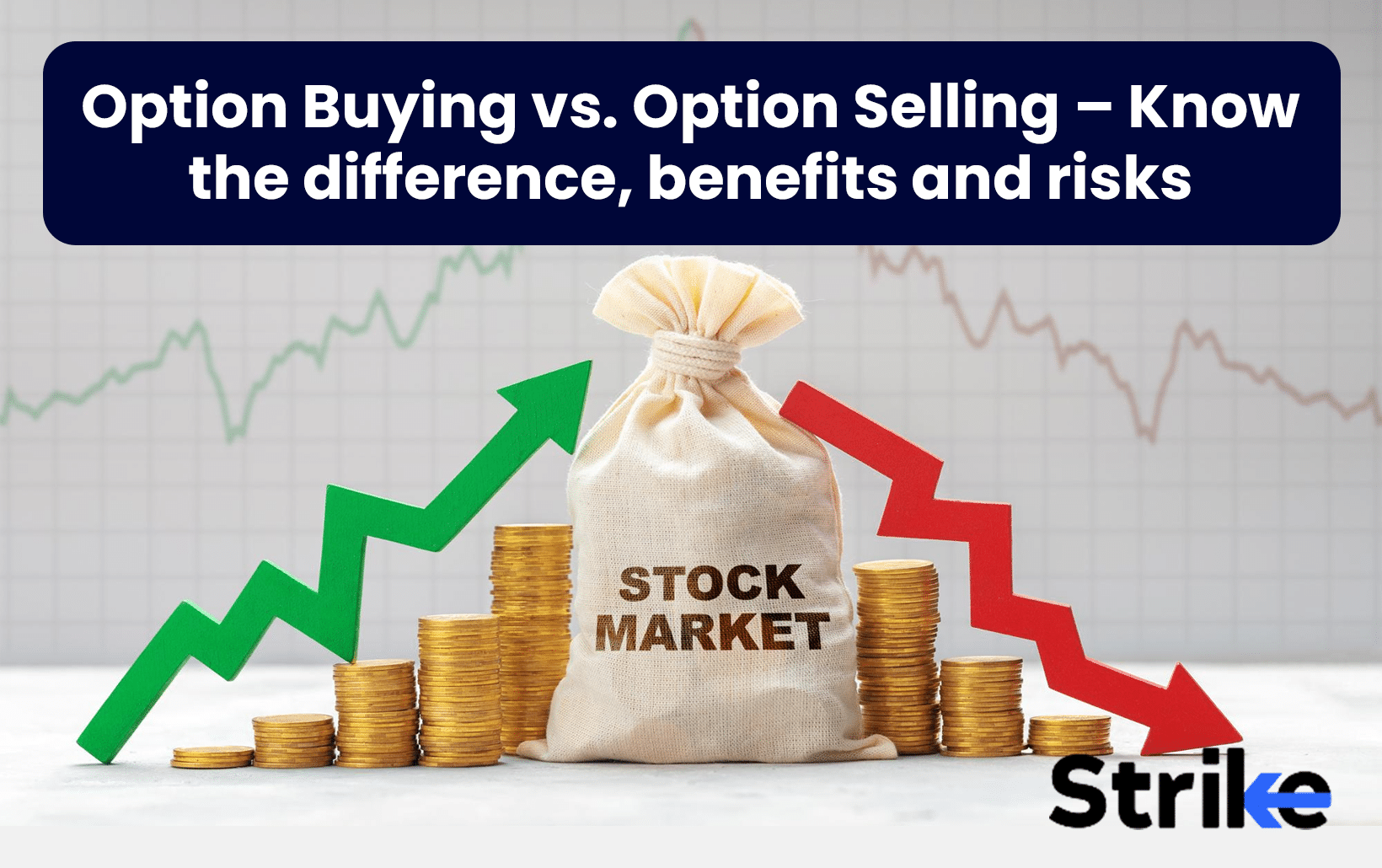
When it comes to option trading, you are faced with two attractive opportunities: option buying and option selling. Imagine option buying as holding a ticket to opportunity, where your risk is limited to the price of the ticket, but the potential rewards can soar to any amount when the market moves in your direction. On the other side, selling the option is like being the one who is offering that ticket.
Here you get paid for the ticket, but with some responsibility, if the market moves in the desired direction of option ticket, you are the one covering the whole cost. Option buying and option selling have their unique set of risks and advantages which suit traders according to their trading skills, trading setup, risk capacity, and period of position holding.
Options trading is like an insurance business in the financial sector. While a trader or investor may want to insure his existing profit against any future price fall or rise, he buys an option paying a particular premium, known as option buying. The option seller promises to compensate the buyer’s losses against future price movement in the opposite direction, surpassing the strike price.
Taking an example of car insurance, the buyer of the insurance pays a premium, against which the insurance company promises to compensate the loss, theft, or damage of the car, in the future specified period (say one year). In the option contract, the option buyer is the car owner, the option seller is the insurance company, and the year time period is the expiry of the option.
Key Difference between Option Buying and Option Selling
Risk
options buying carries limited risk, that is, the premium paid to buy the option. Options selling is the guarantee of payment against the risk, thus the risk is unlimited.
When you do option buying, your risk is limited. this is one of the main attractions of many traders, especially the new ones. The only risk is the option premium paid. Even when the market moves against you, and the option expires worthless, your maximum loss is only limited to the option premium which you paid. This allows traders to take calculated risks and set clear limits on potential losses.
Option selling on the other hand comes with an unlimited risk potential. By option selling, you take the responsibility and commitment to fulfill the risk of market movement in the direction of the option. For a call seller, if the stock price skyrockets, you are obligated to pay the call buyer the amount equivalent to the difference between the strike price sold and the current spot price. For a put seller, if the stock falls, you have to pay a different amount for the strike price sold and the current spot price.
Right and obligation
The option buyer has the right to buy an asset at a predetermined price, the option of which he has purchased. The option seller, on the other hand, must sell the asset at a predetermined price, but has no right.
As option buyer, you hold the right but not the obligation to exercise the option. If you buy a call option, you have the right to purchase the underlying stock or asset at a predetermined strike price within a specified time frame, known as expiry. It simply means that if the market goes upwards, you are entitled to the profits between the strike price and the current spot price. This flexibility allows you to take advantage of favorable price movement or let the option expire without exercising it if the market goes against your intentions.
In option selling, you have no rights, but only obligations. a call seller is obligated to sell the stock or asset if the option buyer decides to exercise his right. Simply put, if the option buyer wants to exit the trade, the option seller has no other option, but to repurchase that option. Similarly, a put seller is obligated to buy an asset if the buyer exercises the put. It is the option buyer to decide whether to continue the trade or exit. Option seller has to obey him on his wish to exit the trade.
However, in the market, there are more market participants which provides flexibility to the option seller to sell this contract to some other trader. However, if there is no other trader, the option seller has to repurchase the option on the wishes of the buyers of the option.
Cost
Options buyer pay the premium, and that is the only cost to him. Option seller pays nothing to sell an option, but pays a margin amount to the exchange 10-20 times that option premium.
The cost of option buying is straightforward, it is only the premium paid to buy the option. This is the only cost that is associated with option buying which makes the buyer’s position simple and manageable. The premium is the maximum possible loss that the option buyer can incur. This gives the option buyer clarity on his financial position.
For option selling, the situation is different. While the seller receives the premium paid by the buyer immediately, the seller has to pay the margin amount to the exchange, for the anticipation that the market can go with the direction of the option sold.
The promised amount to be given to option buyers is unlimited, thus a margin of around 10 – 15 times of the option premium is deposited to the exchange, depending on the volatility in the market. This margin acts as a guarantee that the seller can meet his obligations in the event of option is exercised. While the seller receives the premium immediately, they carry the unlimited risk.
Objectives
Buyers of the calls expect the price to rise, and buyers of puts expect the price to fall. Sellers of calls expect the price to be neutral or fall, and sellers of puts expect the price to be neutral or rise.
The primary goal of option buying is taking rewards of the market movements. Buyers of call options expect the underlying asset’s price to rise above the strike price, the option of which they have bought. Put option buyers expect the asset’s price to fall, allowing them to sell the asset at a higher price to the option seller.
Option selling on the other hand gives benefit when the market remains neutral or moves in another direction of the option they have sold. A call seller would expect the asset’s price to remain neutral or go down, till the expiry period. If the asset’s price remains at or below the strike price of the option sold, they will keep the whole premium of the option. A put seller expects the asset’s price to remain neutral or be above the strike price till the expiry.
If the Infosys monthly call option with a strike price of 1960 is sold by an option seller at Rs 20 (20 * 400 = 8000), he will expect the asset’s price to remain at or below 1960 till the options expiry. He received 8000 as a premium and will keep all of 8000 if the Infosys spot price closes at or below 1960.
Time decay
With time, options lose their values, and time decay goes in favor of the option seller, and against the option buyer, as the expiration date comes closer.
One of the most crucial aspects of options buying and selling is theta decay i.e. time decay. As the option approaches its expiration, it loses its value. For the option buyer, time decay works against him, because he loses the value of an option that he bought. The longer the option buyer holds the option, the more he loses value even when the underlying asset moves in his desired direction.
For option sellers, time decay works for him. As the expiry comes near, the value of the option decreases. This is the sole reason why despite the high risk attached to option selling, traders sell options.
If the Infosys 1960 call option is sold at the start of the month at Rs 20, and if the Infosys price is 1960 after 15 days, the option price comes to around 10 (assuming volatility at 12). If the spot price is 1980 after 15 days, the option price will be around 30 instead of 40.
What Is Option Buying?
Option buying involves purchasing a call or put option, for speculating price rise and price fall respectively, of the underlying security, in the future. Option buying has been made to act as a protection against any possible damage to the positions taken. There are some advantages and disadvantages of buying an option.
What Are the Types of Options You Can Buy?
Types of options you can buy are two: call option and put option.
Buying call option
Buying a call option is a bullish speculation, which means the trader expects the underlying asset’s price to rise in the future. The other advantage of buying a call option is that the maximum loss is limited and the maximum profit is unlimited.
It is because the call option buyer is paying a premium in the form of call option buying. The potential unlimited gain is theoretically possible as the asset price can rise too infinitely. Buying call options allows the traders to take leverage of the asset.
It means to benefit from the price rise of the asset. All investment is not required to be invested into it, but a portion is invested in the form of call buying and the rest money may be invested in another security or a safer investment alternative like Sovereign bonds or commercial bonds.
Buying put options
Buying a put option is a bearish strategy and the trader anticipates the prices to fall in the future. As the asset price declines, the put option premium increases in value and price and thus the trader benefits. The potential gain can be substantial as the price of the security falls below the strike price of which the option is bought.
Buying a put option can also be leveraged as all the money is not required to benefit from the fall of an asset, but to buy a put option, and invest the rest amount may be invested in a safer investment alternative like government bonds.
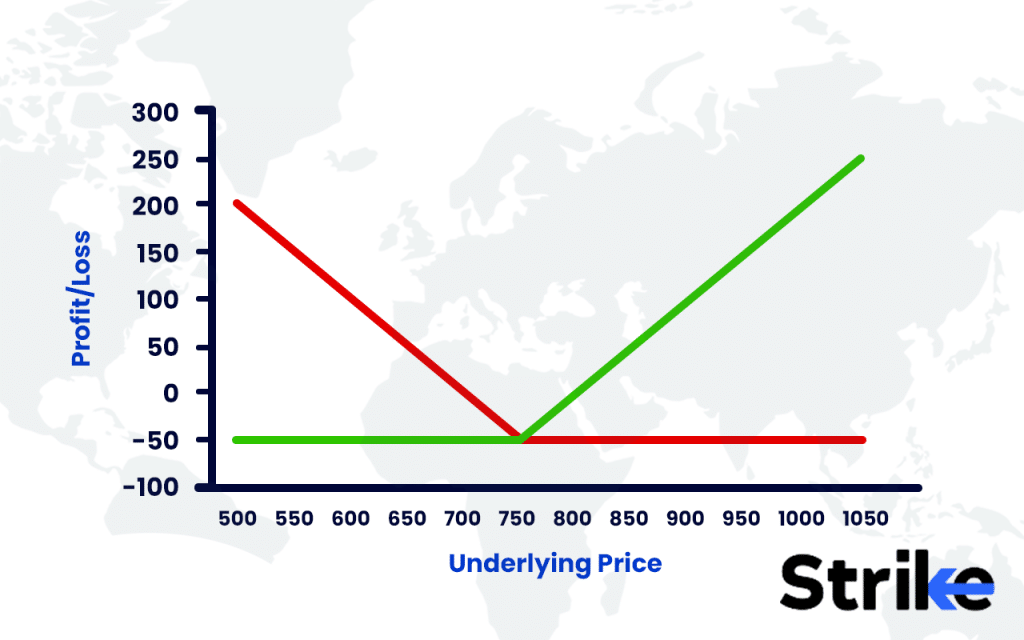
How does Leverage Work in Option Buying?
Leverage in option refers to the ability to put a large amount of capital into an underlying asset or simply a trade, while actually paying a relatively much smaller amount, which is known as option premium. As we have discussed about the premium and its fundamental meaning, leverage is used by fund managers and mutual funds to buy option for an asset, and park the rest amount in safer investments like government bonds or FD.
The amount on risk is only the option premium paid, which might be 5 or 7% of the total amount an investor has, and the remaining amount he can park in a safer investment. Thus leverage in option allows the trader to benefit from the expected movement in the price of a security, without investing the whole amount into that security.
For example – if an investor has 1 crore funds. He may buy options worth 5 lakhs in security which he thinks can rise in the coming months or a year, and for the rest 95 lakhs he can buy commercial bonds or T-bills for safer and secure returns.
Option buyers use leverage to increase their potential returns, but they also accept the risk associated with losing the total premium paid.
What Are the Benefits of Option-Buying?
Option buying offers some attractive advantages which make it a go-to strategy for traders who look to capitalize on the moves of the market with very limited risk. Some of the key benefits are –
- Low-risk investment, unlimited potential: the option buying has limited risk and unlimited rewards as the premium paid for buying option can convert into unlimited gains on price movement. The maximum loss is the option premium paid, while the maximum profit is unlimited, depending on the market movement.
- Leverage at a very low cost: option buying can allow you to own the stocks but only at a fraction of the cost. Instead of purchasing 400 shares of Infosys, you can simply buy one lot of call or put option of Infosys at almost 2 – 5 % of the total cost. This leverage allows you to maximize your gains, while the rest amount can be put in a safer option like bonds or fixed deposits.
- Hedge against existing positions: the primary purpose of options is hedging. If you have a portfolio of stock/s, and you are fearful of a possible market shock, you can simply buy an option against your portfolio. Normally a put is bought against assets, but if futures are sold by a trader, he buys a call against possible market reverses.
- Time-driven strategies: option buying lets you bet on price and time. You can choose different expires for your time budget. Whether a short-term movement or movement for days, there are option expiries and strategies with very short capital at risk.
The traders who want to take calculated risk with clear boundaries on capital, there is no such thing as option buying. It’s a combination of limited risk, leverage, flexibility, and unlimited gains.
What Are the Risks of Option-Buying?
While option buying comes with alluring benefits, it is also crucial to understand the various risks attached to it. Here are some key challenges of option buying –
- Time decay of value: option buying comes with a time decay as the option has an expiry date. As time passes, the value of the option is decreased which is known as theta decay or time decay. This is because the premium on a short expiry is always cheaper than the premium on a long expiry. 365 days have more probability of price fall than 7 days, and the risk probability decides the premium amount. This calculation is measured by the theta decay process. It is measured by the option Greek theta. This can be understood by an example.
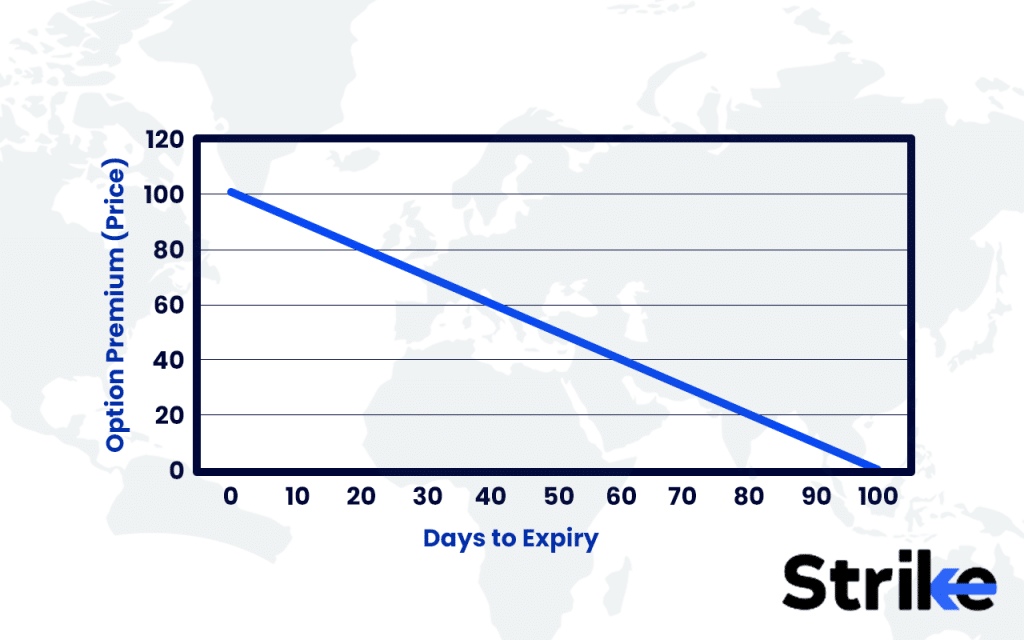
- SBIN’s current price is 800.
- Call option for Sep (2024) expiry – Rs 20 (750 * 20) = 15000
- Call option for Sep (2025) expiry – Rs 100 (750 * 100) = 75000
- Original price of shares – 750 * 800 = 6, 00,000
The premium is greater for greater expiry because the second call option has to cover the whole 365 days in Sep (2025) expiry whereas, the second call option has only 30 days to expire and therefore, less probability of price movement above the strike price. Remember the car insurance example where the insurance is renewed after every year. Here in financial options, there are various expiries like one week, one month, and years.
- Lot size: Another disadvantage of options buying is that they can only be traded in a lot. A lot size is an exchange fixed size in which the option is bought or sold. In the above example, the SBIN future and option lot is fixed at 750 shares, which means if a person wants to take an option, he will have to purchase the option of 750 shares. If he has 100 shares of SBIN, and he wants to hedge those shares with an SBIN put option, he cannot do it.
- High risk in out-of-the-money options: generally the probability of profit in options is low, especially out-of-the-money options.
- Limited time for the big move: for the option buying to be profitable, the underlying asset needs to make a significant move within a shorter time frame (expiry). The stock not only requires you to move in your desired direction but also requires you to move so quickly as to offset the time decay. If the stock moves slowly, it may lose value faster than gaining on movement.
- Volatility crush: options thrive on volatility. If you buy an option during high volatility, and then volatility drops ( say India Vix index drops from 18 to 14), your options value will decline even if the stock price is moving significantly in your direction. This is known as volatility crush.
- Low odds of success: statistics show that many options expire worthless. This is because movement and retraces are a normal procedure of any asset. If the buyer does not exit the trade after significant price movement, there are high chance that the option will expire worthless.
While option buying offers high rewards and controlled risk, it is not free from pitfalls. By understand the risks of time decay, expiration, significant movements, and volatility crush, option buying strategies can be better managed, and informed decisions can be made.
What are the Popular Option Buying Strategies?
Some of the popular option-buying strategies are adopted by investors and traders when they estimate an asset to take a move shortly.
- Long call or long put: profit from the rise or fall of an underlying asset. The trader will buy an option be it a call or put estimate of the direction of an asset in the future. The risk here is the premium paid, while the reward is dependent on the movement of assets i.e. it is unlimited. If the trader estimates the stock price to rise in the future, he will long call, and if he estimates the stock price to go down, he will make a long put.
- Protective put: when an investor has shares of some asset, and he is afraid of the potential downside in the future, he will buy a protective put of that asset choosing a strike price, depending on the profit he is ready to sacrifice to save his loss.
- Long call long put strategy: Long call, long put (ATM) – also known as straddle, the trader buys both calls and puts of the same strike price and expiry. If the stocks move on either side significantly direction, the trader will benefit. Straddles are made during an event that can have a significant impact on markets on either side, like elections, policy change day, or the federal rate decision meeting, etc.
- Long call, long put (OTM): also known as strangle. It is similar to straddle, but low cost. This is because the trader buys options on both sides (call and put) but out of the money, which is cheaper than at-the-money options. This is called a long call long put A sharp and significant move in the asset is required to benefit from this strategy.
Option buying strategies offer a powerful yet manageable way to capitalize on market movements with limited risks and high potential. However, success requires careful planning, a disciplined approach, and risk understanding as risks can quickly erode profits.
What Is Option Selling?
Option selling involves selling the call and put options. The option seller is the insurer of the investor’s profits/portfolio. It is also known as writing or shorting, as the option seller underwriters or takes the guarantee to pay for the losses for which the option premium is taken.
What Are The Types Of Options You Can Sell?
When it comes to option selling, traders can sell call and put options which is discussed below.
- Selling call options: selling a call option or short call is opted for when the trader speculates the option price to remain neutral or fall from current levels. As the trader expects the underlying asset price to fall or remain neutral. In this expectation, the seller sells the call option of a particular strike price which he expects will not be broken above, and the security will not move above that strike price.
If the seller thinks that SBIN will not breach above 800 (or may go down), he will short call of 800.
- Selling put options: selling a put option or short put involves a neutral or bullish outlook for the security in the future. The seller believes that the security price will remain above the strike price until the expiry. If the option expires above the strike price, the option expires worthless and the premium taken by the option buyer is booked by the seller.
If the seller thinks that SBIN will not go below 800 (or may go up), he will short put of SBIN 800.
Thus , selling or shorting is an exercise in which you take the guarantee of reimbursing the losses in case of reverse market movement, for a premium which is immediately taken by you. Statistics show that shorting is a more profitable trade as only 1 out of 20 trades make a significant move to reward the option buyer at expiry.
How does Leverage Work in Option Selling?
Leverage in option selling functions differently, in contrast to option buying Selling options appears to be an instant profit because you get paid in advance for the option. The fact that you are taking on potentially significant liabilities with a comparatively low margin need, however, is what gives you leverage. Stated differently, the amount of risk you assume exceeds the premium you have been paid.
The risk-to-reward ratio can become highly asymmetric if the market moves against your position. Your losses could mount up quickly, much exceeding the premium you initially received. Whether you sold the call option or the put option, you are still exposed to significant risks. This creates a leveraged effect. You are required to give only a part of the full value as a margin requirement. This makes the return on investment potential significantly high.
The use of margin not only magnifies the potential profit but also potential losses, as the losses can far exceed the premiums you receive. If you relieve a 10% premium against your margin requirement, you can also make a loss of 50% against your margin requirement. Thus, while option selling offers steady income, the leverage involved in it can dramatically amplify the gains and losses. Traders must be cautious and plan accordingly to save large financial consequences from selling.
What are the Benefits of Option Selling?
Option selling offers unique benefits, especially for traders who look to make limited but consistent profits, obviously through risk management. Some of the benefits are discussed below.
- Steady income from Premium: The seller receives a premium immediately when the deal is done, and has to okay nothing to the buyer. This is particularly helpful in a sideways market or trendy market.
- Higher probability of winning: The option seller wins at the neutral market or favorable market, while the option buyer only receives money when the market moves proportionately higher in the desired direction.
- Earning possibility in a bear market: investors generally can earn when the stock price moves up, while an option seller can earn even in a bear market or non-directional market.
- Time decay benefit – the option selling is favorable to the time decay (theta decay) process, which lowers the value of an option as time nears expiry, ultimately the benefit is received by the option seller.
- Flexibility in different market conditions: option selling strategies like covered calls, and cash secured puts, can be adjusted and molded to work in bullish, bearish, or neutral markets. This flexibility allows traders to adjust to different market conditions. This allows them more options than just betting on a single market direction.
- Lesser impact from volatility: significant price movements and volatility are rare cases, where the volatility too adjusts to its original position after some time. This gives an advantage to option sellers to add more trades during high volatility. As long as the underlying asset doesn’t make any dramatic move, sellers can be in profit.
- Profit from stagnant price: option sellers make money when the price of the underlying asset remains neutral or in range. This makes the theta decay work for you.
Conclusively, option selling is an attractive strategy for consistent and limited income, but high exposure of capital.
What are the Risks of Option Selling?
Option selling can provide steady income, but it also comes with various risks associated with your capital. Some of those risks are:
- Unfavorable Risk reward: the maximum gain of the option seller is the option premium that he has taken from the option buyer. The potential losses are unlimited which are to be paid to the option buyer, which becomes his unlimited profit. This is possible because the underlying asset’s price may rise infinitely above the strike price. This risk can be limited by hedging of different types, the most common being buying the option against the sold option. This can be understood by the below example.
- Margin requirement: selling options often require high margins futures. This is because the loss in selling options is unlimited like buying and selling of futures. Around 1/10th of the total actual value of security is asked as a margin by the exchange. For example – the SBIN 820 call option costs Rs 23,000 but when one sells the same option, a margin of 1.2 lakhs is required.
- Price gaps: price gaps due to a volatility increase as a result of some new3s or event overnight, cause uncontrollable price movements, leading to your SL hit or significant loss. Suppose due to some overnight event, the next day India Vix soared from 12 to 24, the option seller will suffer losses even without a market movement.
- Limited reward: the maximum profit is limited to the premium paid by the option buyer, while the option buyer is entitled to unlimited gains.
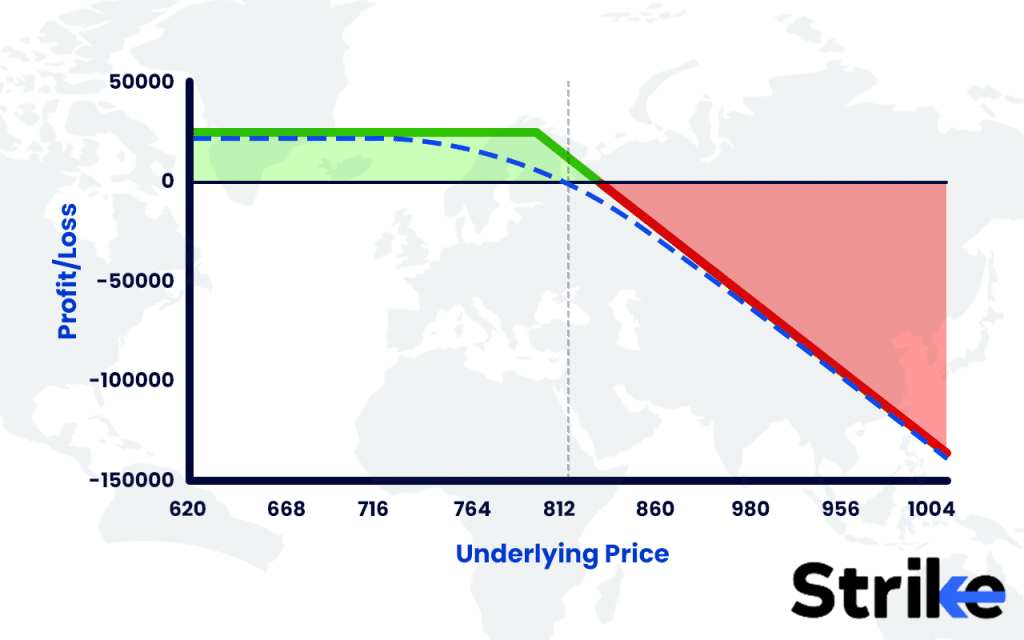
The list in the above chart explains the important statistics. The first one is the probability of profit, which is not any estimation of market movement but is purely based on a mathematical formula of the options expiry and options Greeks. The maximum profit here shown is 23,625 which is the option premium, the seller gets once he sells the option. The seller will get the entire premium if the SBIN closes at or below 800 at the September expiry.
- RR is not calculable: The risk-reward ratio is not calculable as loss is undefined, the breakeven points are the points between which the trader will be safe and no loss will take place at the time of expiry. Here if SBIN closes at 831, the seller will incur any losses as he will have to pay only the premium that he has taken from the buyer. The estimated margin here can be seen at 120352, which is required to sell one lot of SBIN September 800 Call option.
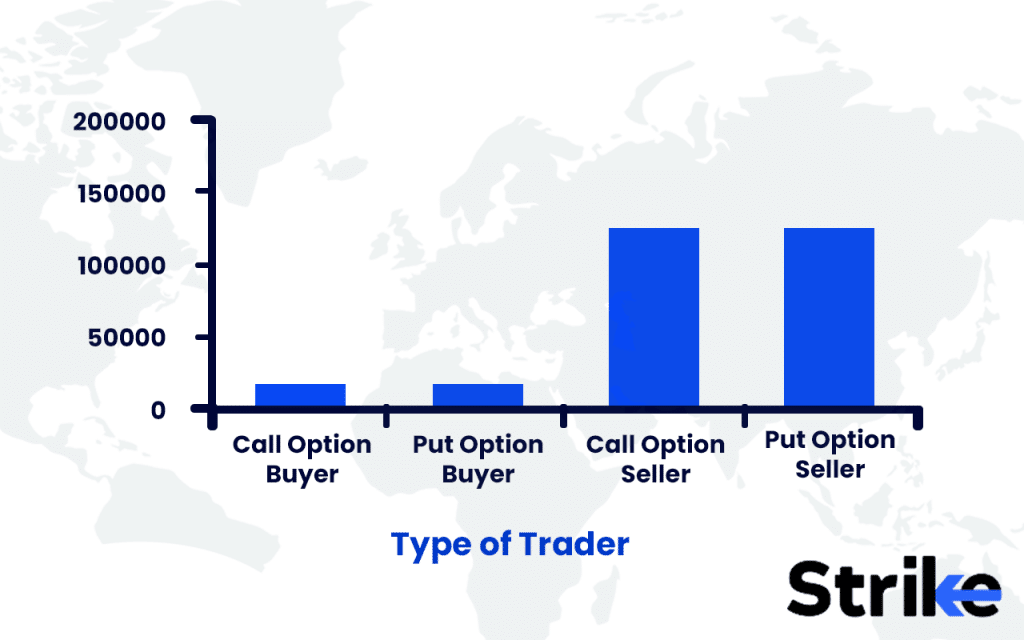
- Obligation but not the right: the seller of the option must buy or sell a specific lot quantity from the option buyer, at a predetermined price, but the buyer does not have any such obligation. Suppose there is no other trader in the market to buy this deal from the seller, the seller has to close this deal on the wish of the option buyer.
- Taking the above example, if the index is at 25,600, the option premium’s current value is 700, the option buyer is at a profit of 700 Rs (200 premium + 500 profit), and there are no other dealers in the market, the option seller is bound to close the deal at the option buyer’s will.
- Time decay mismanagement: Mismanagement of the expiry period can backfire. If the market moves quickly near the expiry date, you may not get time to react or adjust the positions.
- High opportunity cost: since the option selllers bet on neutral market, they pay high opportunity cost if they make money in short term with short capital with option buying in a single directioanl move of an asset. You could have earned Rs 60,000 in one day, instead you earned 30,000 in a month. The 29 days and 30,000 is the cost of opportunity that you paid by selling an option.
- Capital exposure and risks: option sellers expose high capital in the form of margin requirement when they work on leverage. This is a dangerous combination when techncial errors, exchange error, clearing house insolvency, SL limit order execution, any of these can work against you any day. A solution to it is always sell option by hedging it.
While option selling can be lucrative for consistent income, it has sits own high risks associated. It requires deep understanding not only of market, but also of risks associated with it. Strategic use of margin and hedging is required to work in it.
What are the Popular Option Selling Strategies?
To cover the risks and to obtain benefits of strategies involved in option selling, some of the popular option-selling strategies are explained.
- Covered Call: Perhaps the most common option strategy outside of just buying call options is to set up a covered call or buy-write transaction. Because it lowers some of the risk associated with being long on the stock alone and produces income, this strategy is quite popular. In covered call strategy, the short strike price is the specified price at which you must be willing to sell your shares in exchange for the trade-off. In order to put the technique into action, you buy the underlying stock as usual and at the same time write down—or sell—a call option on those identical shares. Taking an example where an investor uses a call option on a stock where each call option represents 1000 shares of the stock. In tandem with purchasing 1000 shares of stock, the investor would alongside sell one call option.
Choosing an options strategy like the covered call is similar to driving a car. There are a lot of moving parts. But once you have understood the characteristics, you can drive towards your destination. Before starting to drive, you must understand the risks involved and be comfortable with the risks.
- Naked option selling: the option seller doesn’t try to cover its positions in any stock, but as a trader, anticipates that the stock will more or less be stable at the same price, in other words, will be neutral in the near future. Thus he sells the call and puts options of At-the-money (ATM) strike price. This is called as Naked Option selling. This is generally considered a safe option selling strategy with good returns.
For example – the current price of SBIN is 800. The seller will sell 800 calls and 800 put. This will hedge each other while also trying to benefit from the theta decay.
- Cash covered put: A cash-covered put, sometimes referred to as a cash secured put, requires you to have sufficient funds in your account to pay for the possibility of purchasing the underlying stock on which you are selling a put. Selling a put option and having cash on hand to purchase the stock at the strike price is known as a cash-secured put. A cash balance of Rs. 1,00,000 must be present in the trading account for the sale of the put option, assuming the 100 put strike price is sold and the lot size is 1000 shares. We refer to this as a cash-secured put.
These popular option-selling strategies are designed to capitalise on theta decay, neutral markets and specific price movements. Each strategy has its own risk reeward, and traders must carefully examine every strategy with their trading setup.
How to Combine Option Buying and Selling?
Straddles and Strangles
Straddles and strangles are the option selling strategies where the option seller anticipates the market or the asset price to remain more or less stable.
- Straddle is when the trader sells the call and put option of the same strike price which is At-the-money (ATM). If the asset price is 100 currently, the seller will sell the call and put of 100. With time, the theta decay will start to give you profits on your straddle when more or less the asset price remains the same or fluctuates to come again on the strike price.
- Strangle on the other hand is a wider option selling strategy that covers price volatility to some extent. In this slight OTM call and put options are sold. If the price of asset is 100, the seller will sell 90 put option and 110 call option. It covers a wider fluctuation of the asset price. The trader will be safe in the range of that strangle. In the above example, a trader is safe in the range of 90 to 110. If the asset price closes within this range at the expiry, the trader will carry the premium earned in the form of profits.
Spreads (Vertical, Horizontal, and Diagonal)
Option spreads are the common strategies used to minimize the risk or bet on various market outcomes with the use of two or more options.
- Vertical spread: in a vertical spread, the trader sells an option at a higher price and buys an option in the same line at a lower price. Selling a call option of 100 and buying a call option of 110 is an example of a bear spread. Or in when the trader expects prices to rise, he will sell the Rs 100 put option and buys the Rs 90 put option.
- Horizontal spread: A horizontal spread is a simultaneous long and short position on the same asset and strike price but with a different expiration. Horizontal or calendar spreads allow traders to build a trade that minimizes the effects of time. To create the horizontal spread, a trader first specifies an option contract to buy and then sells a similar contract that has a shorter expiration date. The two identical contracts, separated only by their expiration date, create a difference in price, a difference which the market accounts for as time value, specifically the amount of time that differs between the two contracts.
- Diagonal spread: purchasing or selling a call or put option at one strike price and one expiration and selling or buying a second call or put at a different strike price and expiration is known as a diagonal spread. With the help of diagonal spreads, traders can take a bullish or bearish stance while simultaneously designing a strategy that reduces the impact of time.
Because it incorporates elements of both a vertical and a horizontal (calendar) spread, it is known as a “diagonal” spread. For example, buying the option with the longer expiration date and lower strike price and selling the option with the nearer expiration date and higher strike price. This is called a bullish long call diagonal spread. Buying one Rs 100 call option in December and simultaneously selling one April Rs 125 call.
Options spreads, whether a horizontal, vertyical or diagonall spread, offer trades a versatile toolkit to manage their risks while effectively benefit from the option selling, and maximise their returns.
Iron Condor and Iron Butterfly
This is the safest option selling strategy, which has the lowest probability of loss. Even in the case of loss, it will give the least loss as compared to other strategies, and also safeguard the trader from sudden changes in the market like war or election results. It is done by creating a sell strangle or straddle, the addition to this is buying call and put options of far strike price to limit the maximum loss possible. This limits the exposed capital, and removes the tag of unlimited loss in option selling.
- Iron condor: If a trader identifies the range of SBIN for this month to be 800 and 820. He will sell 820 calls and 800 put as strangle. In addition to this, he will buy SBIN 840 call and buy SBIN 780 put. Now this is an iron condor, where loss is limited. The range of options sell and buy can vary according to the premium value of options. One can also buy a call of 850 and put of 760, and so on.
- Iron butterfly: in an iron butterfly a trader assumes that SBIN will roam around 800 only in this month and the price will be stable. He will sell 800 call and put, and will buy calls and put options at lower values, like buying a put of 780 and a call of 820.
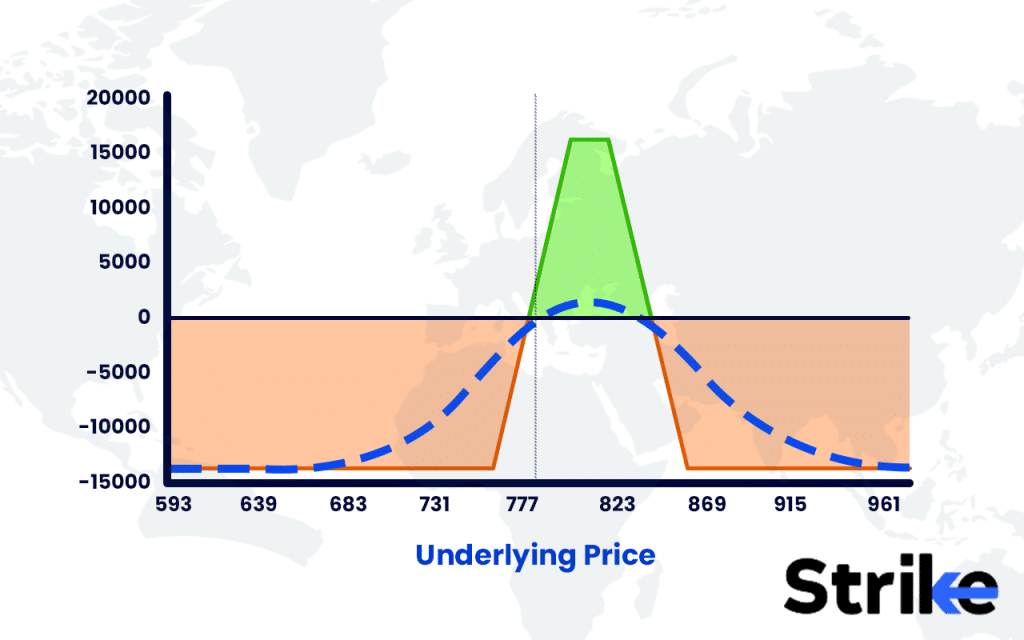
Both iron condor and iron butterfly are powerful neutral market strategies which cpitalise on limited price movements and time decay of the underlying assets. This makes them popular among traders seeking steady returns with limited risks.
How to Choose Between Option Buying and Option Selling?
Choosing between option buying and option selling depends on two major factors – capital availability, and mental discipline. It is very important to have a deep understanding of the working process of both option buying and selling, the very purpose of options, and the risks associated with it.
It is advised that sticking to one strategy does not always work as market dynamism does not allow a one-size-fits-all strategy. There are some factors which are required to keep in mind while choosing a strategy. These factors are mentioned below.
- Market outlook and sentiment: a strong sentiment in the market is followed by option buying, as it is a prudent decision to take benefit of the strength of sentiment while putting the least money at stake. A breakout, for example, is a good situation when an option can be bought because strong sentiments will follow. But at the same time, a breakout may also become a breakdown due to the same sentiment strength. Thus putting large money at stake is not prudent.
- Risk tolerance: there are certain strategies where a trader may want to buy only options as he is risk averse, and prefers to put only a small amount at stake. On the other hand, option selling demands a high margin, but at the same time has a high probability of profit. A trader may use all his money in option selling and keep 2% as ”Stop Loss”, while a trader may use only 10% of his money in option buying and set 5% as ”Stop Loss”.
- Capital: option buying requires less capital and it can be very well used for hedging the positions or benefiting from a potential event that can impact the market. while option sell requires a higher amount of money and all money is put at stake without hedging or a ”Stop Loss” order.
- Time decay: time decay is one of the major factors of options, if the trader wants to risk less by option buying, the probability of benefitting is also less, whereas the probability of profiting from option sell is higher. It’s a general perception, that in 100 trades, 80 will go in favor of option sellers, and 20 in favor of option buyers. Thus the option to buy events must be carefully selected.
- Volatility: When volatility and fear are high in the market, premiums of options also tend to increase. This is because there is a higher risk in providing insurance against the risk. Like a 50-year-old’s insurance premium will be higher than a 25-year-old’s.
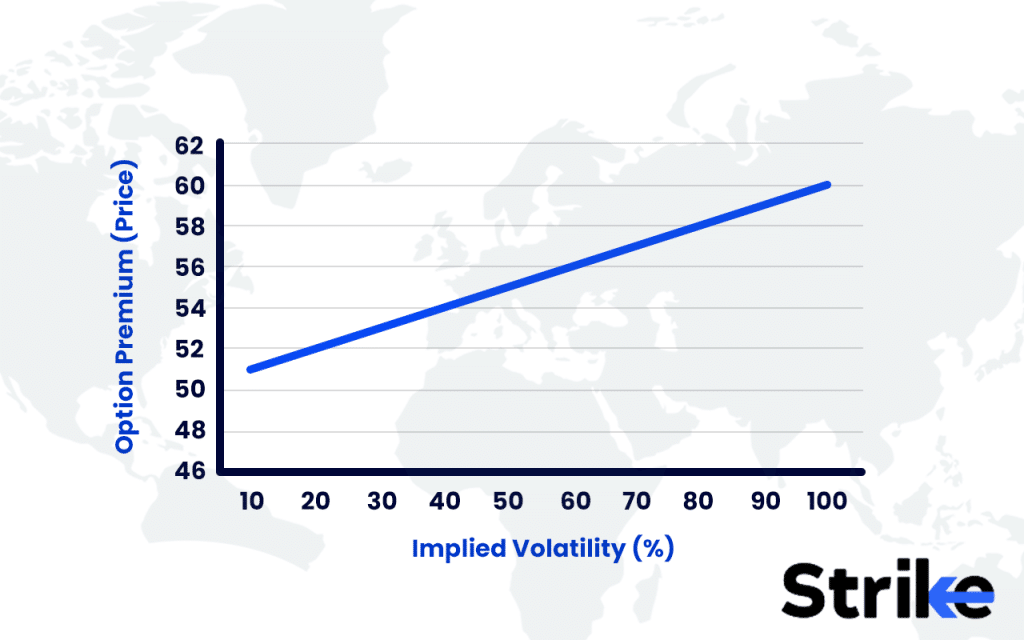
Which Is Better, Option Buying or Option Selling?
Experienced traders and investors often use mixed strategies to deal with the market at different times. They can sell the options with adequate hedge through buying options in the same trade, this limits the maximum loss while benefitting from the theta decay. When the volatility index and option Greeks do not support hedging, in other words, hedging becomes too costly against the reward, they sell naked options. And in an event or anticipation of an event, they buy options and wait to see the market sentiments and reactions.
Can You Make More Money Buying or Selling Options?
Both the option buying and option selling can be profitable under certain market conditions. Option buying offers high gain potential with the least risk, with time decay against it, while option selling provides consistent profits, income, and time decay benefit, but involves unlimited risk and higher capital.
Is Option Seller Riskier Than Option Buying?
Theoretically yes. But when properly managed other risks, option sellers take the benefits of theta decay. The asset price soars, and then corrects itself to some extent, and there are very less chances that the asset price rise substantially in a short period.
Why Is Option Selling Costly Than Option Buying?
The option seller promises to compensate the buyer’s losses against future price movement in the opposite direction, surpassing the strike price. Try to recall the car insurance example. The option seller is the insurer to the option buyer and if the market goes against the positions of the option buyer, he will pay the buyer the compensation amount. Thus the exchange charges you the marginal money to fulfill the promise made by the seller to the option buyer.
For example, if the option buyer buys an option of nifty 25000 pe (put), he is insuring that the seller will pay him the amount equivalent to the points below the 25000 strike price at expiry.
If nifty expires at 23000, the seller has to pay the buyer 2000 points (25000-23000), i.e. 2000*25 = Rs 50,000. Thus a margin is taken so that around 4000 points fall should be covered. You have to assure the exchange that you are ready to pay the amount in case of nifty goes down (or up, as the case may be). This is why options are an insurance product.
Conclusively, it can be observed that option buying and option selling is primarily made to hedge the funds and if the traders want to use this instrument as a measure of earning trading money, they have to carefully examine the nature and character of the options, while keeping in view all the factors which affect the option value. These factors are more or less available on trading and brokerage websites. Hence all the information must first be obtained, strategy must be made by the loss potential and risk capacity, and traded with disciple and practical approach.
Page Contributers 

Arjun Remesh
Head of ContentArjun is a seasoned stock market content expert with over 7 years of experience in stock market, technical & fundamental analysis. Since 2020, he has been a key contributor to Strike platform. Arjun is an active stock market investor with his in-depth stock market analysis knowledge. Arjun is also an certified stock market researcher from Indiacharts, mentored by Rohit Srivastava.

Shivam Gaba
Reviewer of ContentShivam is a stock market content expert with CFTe certification. He is been trading from last 8 years in indian stock market. He has a vast knowledge in technical analysis, financial market education, product management, risk assessment, derivatives trading & market Research. He won Zerodha 60-Day Challenge thrice in a row. He is being mentored by Rohit Srivastava, Indiacharts.




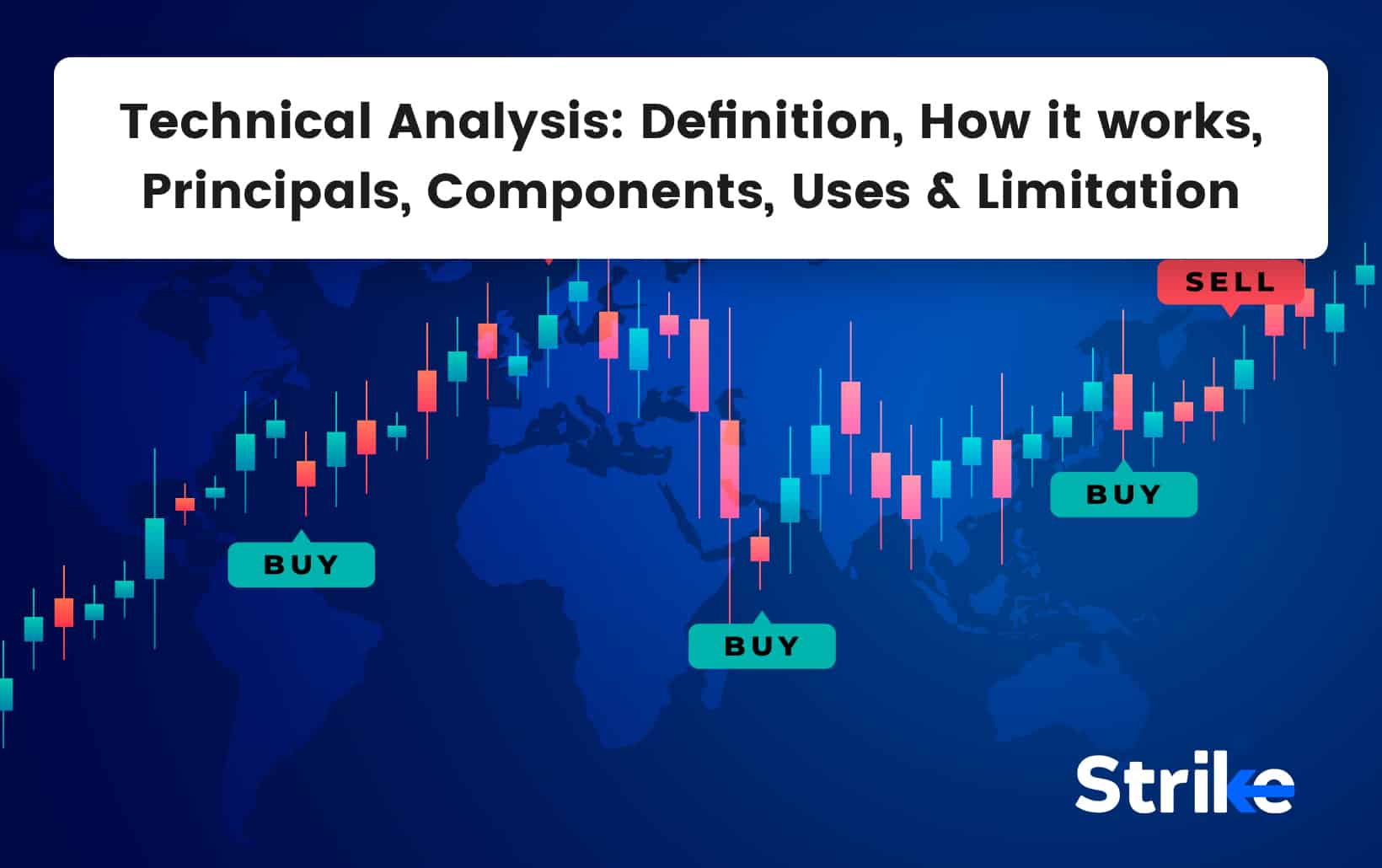
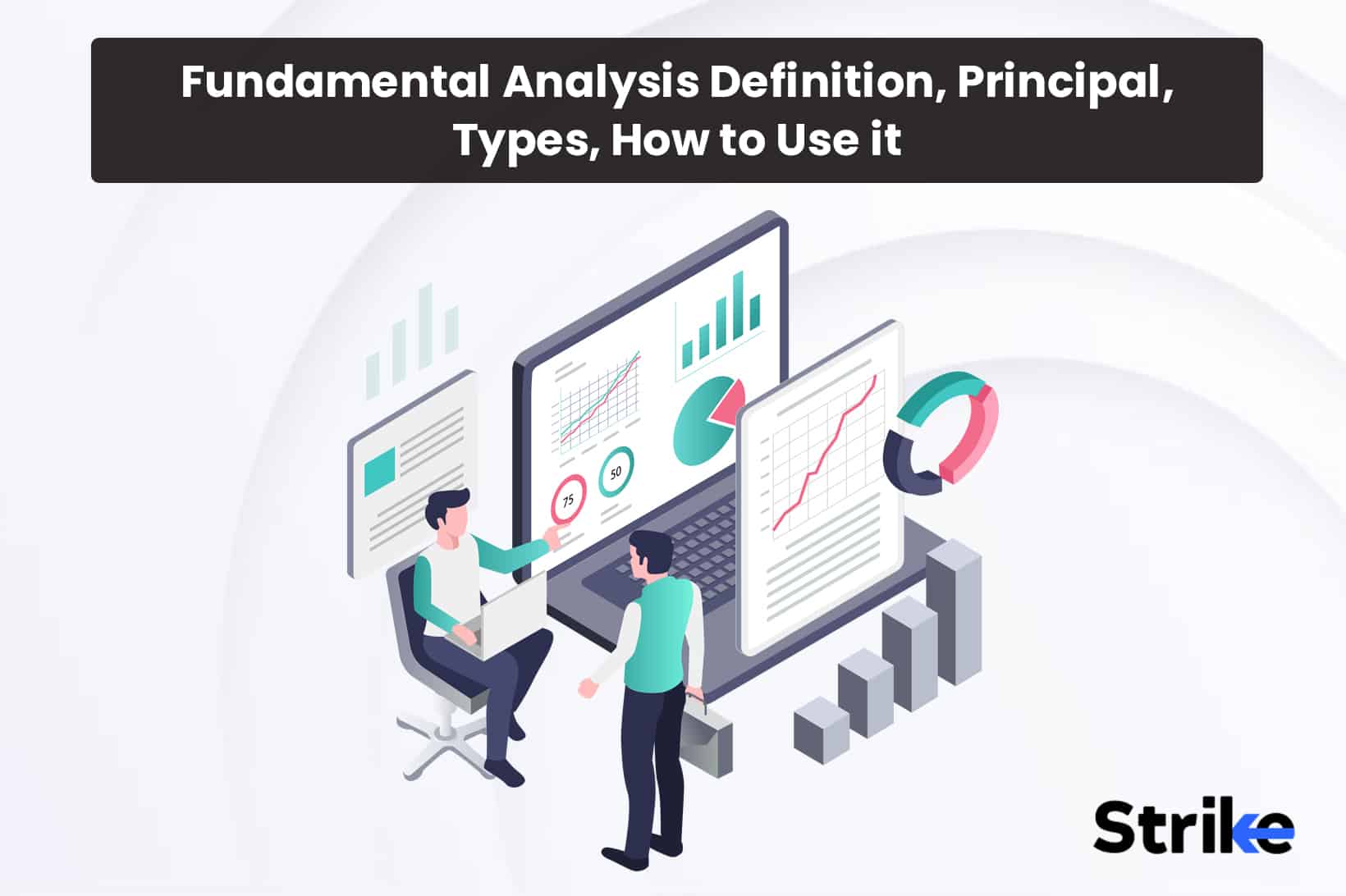


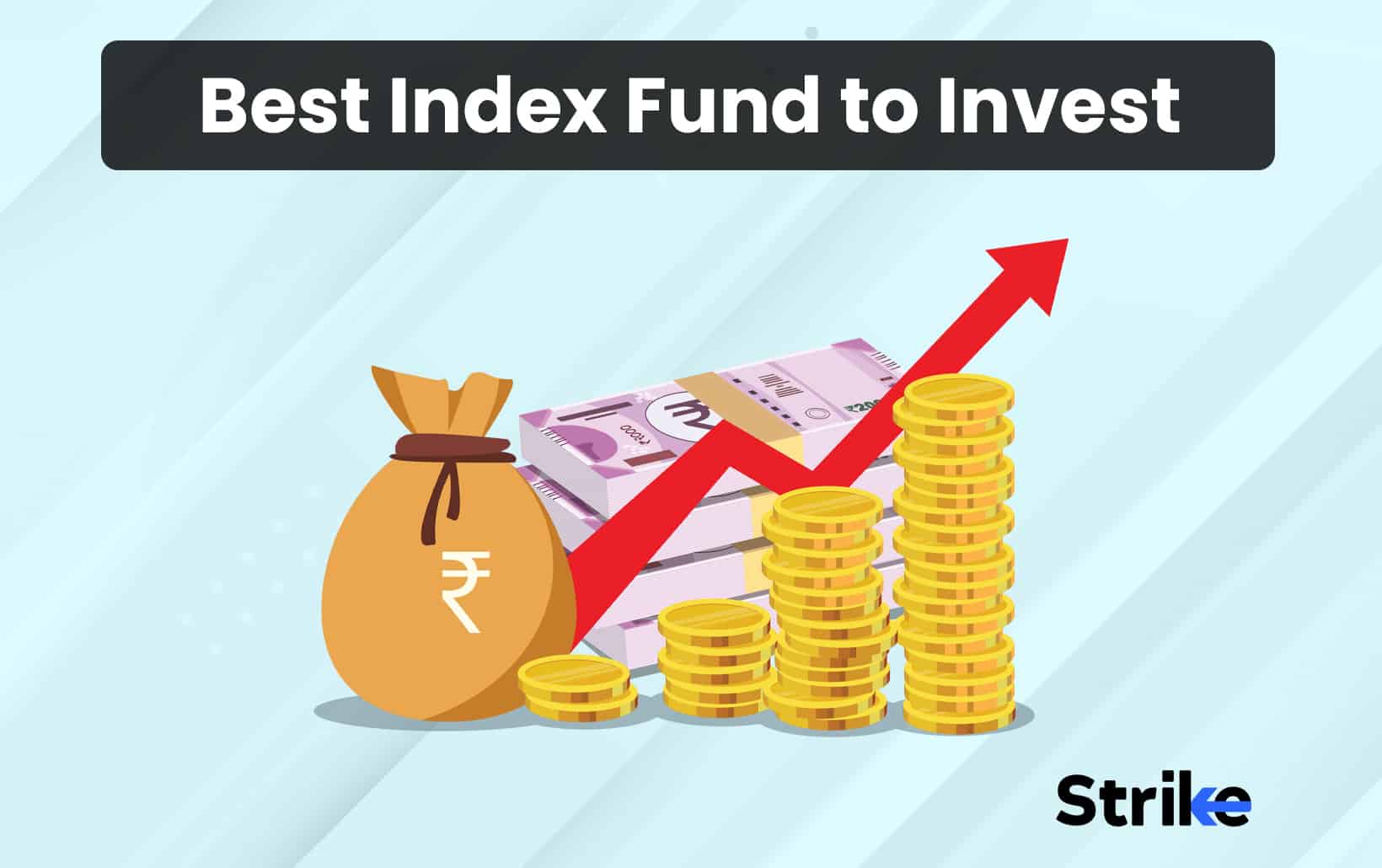



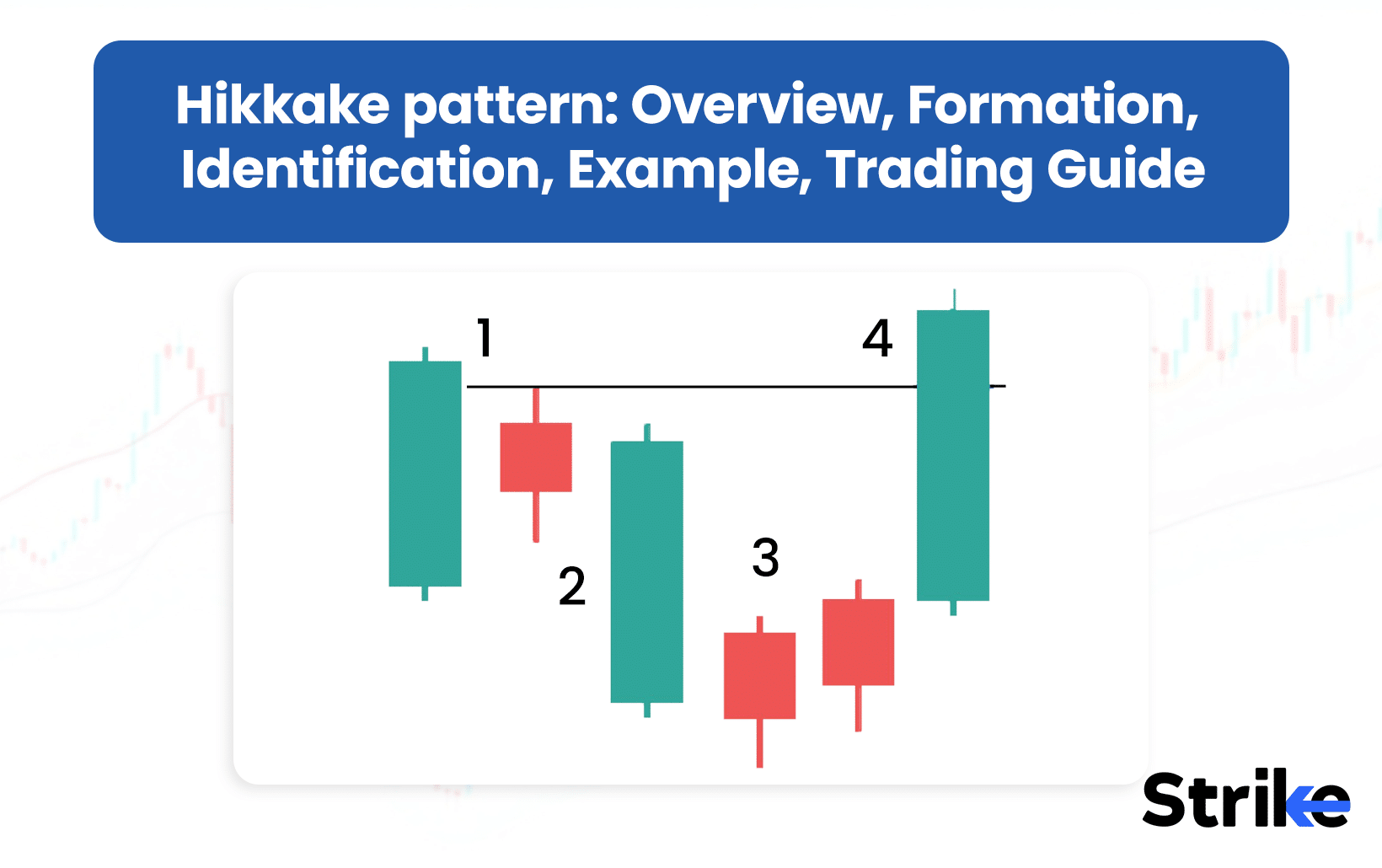
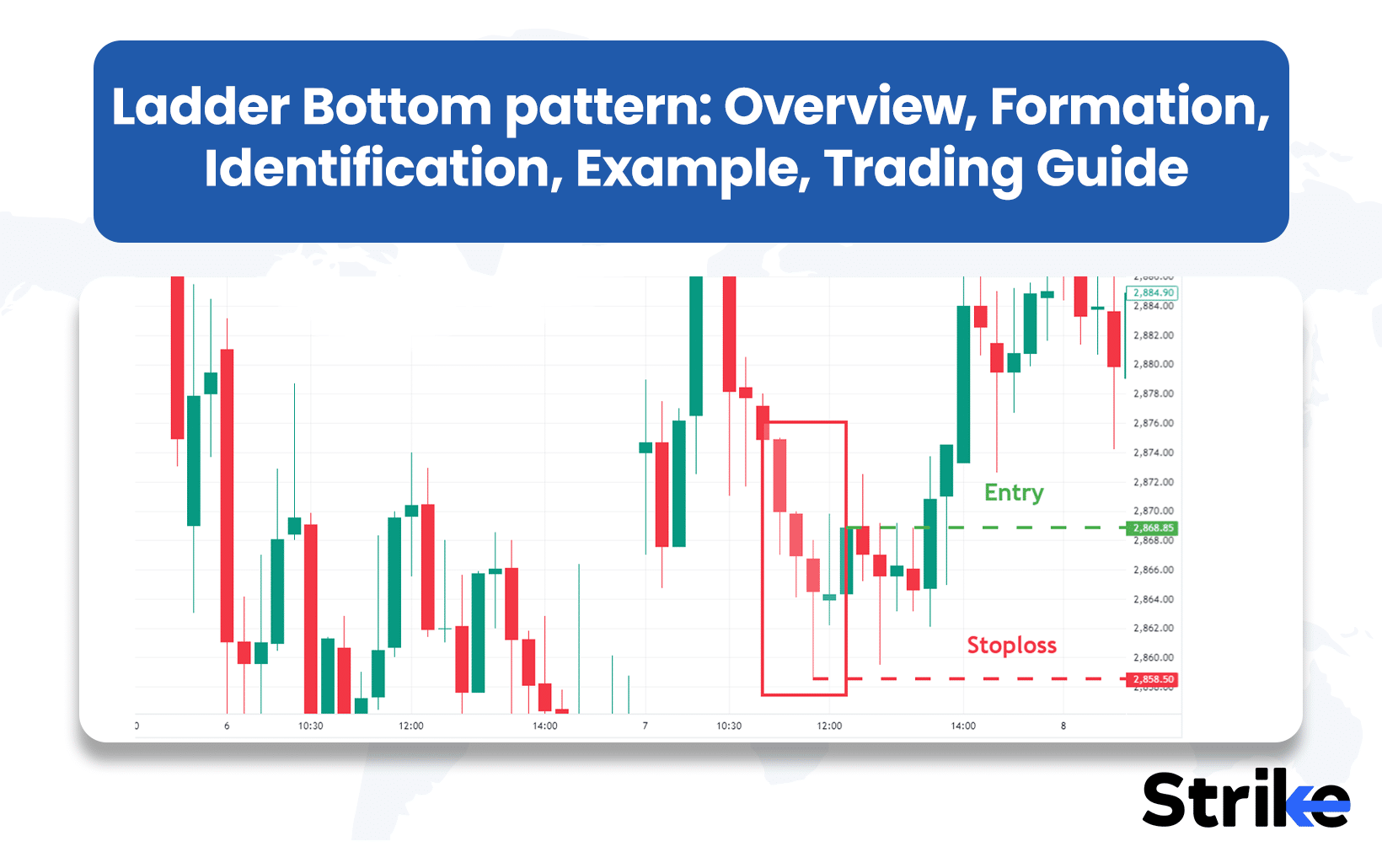




No Comments Yet.